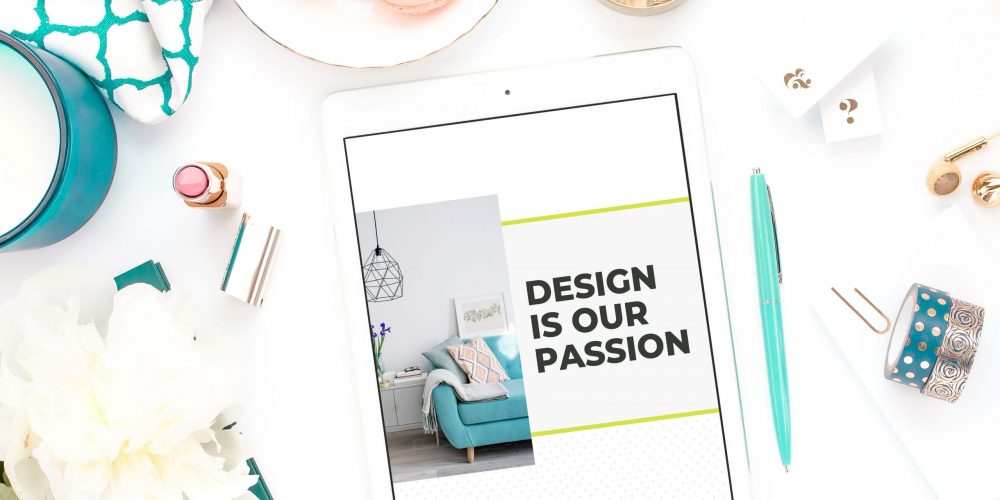This article is the first in the Design 101 Fundamentals series. This series gives you an overview of the basics of design so that you can make more informed decisions about how design enhances your business.
Check out the other articles in the series:
Design in the Real World
We design things all of the time. Arranging your kitchen counter, aligning framed pictures on a wall, rotating your canned goods so the labels face outward—all count as forms of design.
Okay—arranging canned good labels might be extreme, but the act does count as design.
Arranging your books on the shelf by height, color, topic, or author is a way to organize and make sense of your book collection. However mundane, these are all examples of design.
Design is the act of arranging things in a particular order for a specific effect.
Design can extend to people. A choreographer arranges her dancers in formations on the stage. The dancers move to their predetermined places on the stage at specific times while executing the choreography. All of this is design.
How your office is arranged and where you sit are all by design. Your office can have individual rooms with doors or evenly spaced cubicles. The cubicle partitions can be high or low. The design of an office has a decided effect on the workers. Office design can help or hinder productivity and encourage or discourage communication.
Is There Such a Thing as Good or Bad Design?
The question of “good” or “bad” design all depends on your intended purpose. Purpose is the greatest consideration when talking about design. What is the purpose of your design? What is the intended outcome?
In a very broad sense, good design fulfills the goals you have for your website.
When it comes to your business website, what do you want to accomplish with it? What do you want visitors to do when they land on your site? How do you want them to feel? What kind of actions do you want them to take?
In a very broad sense, good design fulfills the goals you have for your website. “Bad” design keeps you from reaching those goals. All design is malleable. If something isn’t working, it can be changed.
Why is Design Important?
Virtually everyone despises chaos. We have laws and statutes in place to keep our society from devolving into a state of lawlessness and anarchy. Humans by nature like order. We like to define, categorize, and make sense of the world around us.
Design helps us bring order to chaos.
Using a real-world example, we’ll go back to the books on a shelf example to help us understand the importance of design.
If books are helter-skelter on the shelf, laying this way and that way, upside down, spine facing you, spine the opposite say, etc., it’s hard to access what is available to read.
There are several ways to arrange books that would help you easily find the book you want. Your purpose for organizing your books is to arrange them so you can easily identify the title, the author, or the topic. You also want to easily replace the book on the shelf when you’re finished with it.
One option is to arrange books alphabetically by title. If you remember books more by title, this a great way to arrange them.
Or you can order them alphabetically by author’s last name. This works great if she is an author you particularly like and you collect a lot of her books. This way, you can always find that author’s books, because they will always be together.
Another way to order the books would be by color. If you recognize books by their appearance, this might be a great solution for you.
How you design something, even books on a bookshelf, is dependent upon your purpose and desired outcome. Any one of these arrangement methods will help you easily find the book you want.
What does Good Design do for Your Business?
Effective design will bring order to your business chaos.
I always say that an organized space is indicative of an organized mind. Whether your space is physical or digital, how your space is set up, organized and designed speaks volumes of your state of mind and your clarity of purpose.
A well-designed brand (including messaging, website, marketing materials, etc.) says that you have truly thought through your venture. You know where you are and where you are going. You know what kind of audience you want to attract. You know your values and your mission.
Familiarity breeds connection.
On the contrary, a messy, inconsistent brand devoid of good design will hinder your efforts in attracting the kind of business and growth you desire. Good design helps you create consistency in your business on all levels, from your branding to your processes.
Design helps you build a visual brand identity that your customers and potential customers will recognize. Familiarity breeds connection.
Good Design can Establish You as an Expert in Your Field.
Have you ever visited a website of a prominent company or personality and were underwhelmed by what you saw?
Perhaps the site looks like it hadn’t been updated since 2000.
Maybe it’s extremely plain or looks like someone’s kid threw it together.
Maybe the colors are off. The images are fuzzy or pixelated, or they just don’t match the topic. Maybe the site uses garish colors and campy fonts. Or it takes forever to load.
Some prominent companies have been around long enough to get away with design faux pas. They’ve been around long enough and proven themselves; web design is an afterthought for them.
You, as a small business owner or entrepreneur, don’t have the same luxury as Warren Buffet. Your design should be as professional as possible to set the tone for your business.
Even if you are just starting out, invest a little bit of time and money to include good design into your business.
How do You Know when a Design is Effective?
When your business implements effective design, you will meet or exceed your core business goals and outcomes. Visitors, conversions, and sales increase. You’ll have more engagement and discussion.
Good design isn’t just about aesthetics. It’s also about usability and function. It’s about clarity.
Good design makes it easy for people to get in contact with you, leave comments on your blog, share your content with others, join your newsletter, and order from your shop.
Good design aligns with your core business vision and mission. It creates congruency. In other words, it helps things “all go together.” Nothing looks out of place or uncharacteristic.
If your business values efficiency and streamlines, your design should reflect those qualities. Your content will cut out extraneous information and help your customers with exactly what they need.
If your business values relationship, then your website blog should prominently feature easy ways for visitors to share your content with others.
Good Design Makes Things Easy
- Good design simplifies the complex.
- Good design makes complicated things seamless.
- Simplicity attracts. Complexity repels.
People search for things on the web because it’s easy. Most people go online for information because it’s easier than driving down to the library and sifting through stacks of books. Online research is easier than going to the archives and scrolling through pages and pages of microfilm.
Most people go online for information because it’s easier than driving down to the library and sifting through stacks of books. Online research is easier than going to the archive office and scrolling through pages and pages of microfilm.
When they come to your website, how easy is it for them to find the information they need? Good design helps your business because it makes it easier for your customers to find the information they need and make a decision. That decision could be to sign up for your email list, your course, or buy your product.
“Can I learn design? Should I DIY it? Should I hire a designer?”
Everyone can learn core design principles that will enhance their business.
I wrote this Design 101 series just for that purpose: to give you an overview of the fundamentals of design so that you can make more educated decisions about how design can enhance your business.
DIY it (do it yourself) when you have a limited budget and you have time to learn design principles and apply them.
I have several design courses to get you going on your path to creating beautiful things: from design basics to creating a beautiful website to making eye-catching marketing materials for your website or blog that people actually want to share.
Hire a designer when you are ready to “go to the next level.” When you are when to invest in the future of your brand, go with a professional who can guide you through the process.
- A designer will help you get out of your own head and your own way and get to the essentials of your purpose and desired outcomes.
- A professional designer will help you clarify your message, visually upgrade your brand message, and turn potential customers to loyal followers.
- A designer will help you cut through the mental clutter and bring beauty and order to your business chaos.
Some Key Takeaways
- Good design brings order to your business chaos.
- Everyone can learn core design principles that will enhance their business.
- Design helps us make sense of things. Design is integral to our lives.
- We only notice when design is bad because it is dissonant and doesn’t flow with our understanding or experiences or how we perceive order.
- When design is good, it is seamless, almost invisible in some instances.
- Good design builds brand consistency and makes it recognizable.


